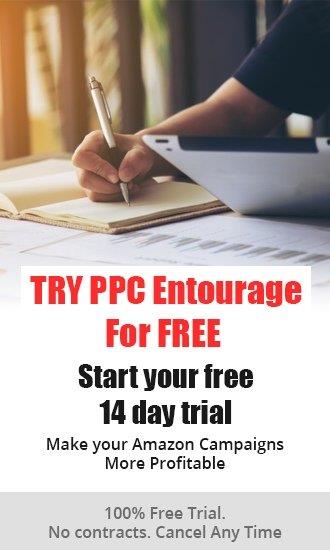For new sellers looking to introduce their product(s) and brand into the vast Amazon marketplace, and for those experienced sellers seeking to launch a new product or product line; having a well thought-out strategy for a product launch is more important than ever, due to the massive increase in the amount of competition on Amazon in recent years.
The difference between launching a successful product, or having a product(s) lost in the vast Amazon landscape, starts with having a strong product, knowing your costs on a granular level and not skipping any basic marketing steps in your rush to capture your share of online gold.
The following PPC Launch Method is designed to assist an Amazon seller in...
- Building a strong base of reviews
- Getting indexed and ranked for a general base of relative keywords (product-related keywords)
- Targeting 2-3 relevant keywords for an aggressive launch with the goal of getting your product to page 1 (starting with less competitive keywords and moving to more competitive keywords)
Ground Rules for Using the PPC Product Launch Method
Having a successful product launch goes hand-in-hand with 7 basic ground rules…
- Create a great Product Listing, which should consist of these elements: Product Title, Product Images, Key Product Features, Product Listing Description.
- Place targeted keywords into prominent locations. Enter your keywords into your product’s title, bullets, back-end (as an entire phrase), subject matter and description.
- Target 2-3 main keywords at a time for an aggressive and highly targeted launch. Start with less competitive keywords, but still highly relative keywords. Get ranking on those and move on. (It will take between eight and ten days of aggressive targeting for best results). Meanwhile, you'll build reviews and eventually target more competitive keywords.
- Address higher ACoS. Keep in mind that PPC product launch campaigns will likely have a higher ACoS initially, which can be reduced through optimization of those campaigns using a software tool like PPC Entourage.
- Use a coupon to overcome lack of social proof. The discount should be 25-50% Off for a limited period of time (scarcity). Start with a higher percentage discount if your product has 0 reviews.
- Create PPC product launch portfolios. House all PPC product launch campaigns inside of these portfolios to make it easier to monitor and further optimize them as needed, and for a more dialed-in control of your budgets. You can create a PPC portfolio inside of seller central.
- Track Your Keywords! This is the most important and essential step. Make sure to use a keyword tracking tool from the very beginning to measure your progress.
The ‘Aggressive’ PPC Product Launch Strategy

STEP 1️ — Build a Base of Reviews and Achieve General Keyword Ranking with Manual and Auto Campaigns.
The first step is meant to build up your new product’s base of reviews, get it ranked and recognized on Amazon (for a broader group of keywords and search terms), and to build up your advertising campaign’s history.
WEEK 1: Create the Base Manual Campaign
This is a single campaign with multiple ad groups. Start off with a Fixed Bid Strategy, where Amazon uses your exact bid for all opportunities and does not adjust your bids based on likelihood of conversion. You may progress to using a Dynamic Down-Only Bids Strategy as needed.
How to:
Create Ad Groups 1 and 2 using the same keywords. You will be using your 8-15 “best and most relevant” keywords including your 2-3 launch keywords. For this article, we're defining launch keywords as relevant keywords that are slightly less competitive. This way you have a better chance to rank for those keywords initially.
Ad group 1 will use Broad Match and Ad Group 2 will use Phrase Match. Stay competitive at the start with moderate to high bids (above Amazon's suggested bid range).
EARLY OPTIMIZATION - Use Negative Phrase Match early on to help eliminate some words or phrases that you know are not relevant to the product you are selling. For example, If you sell plastic cups and you don't want to be visible for glass cups, using the word "glass" as a negative phrase match will help target your ads to the right shopper.
Create Ad Group 3, which should be used for low competition Product Targeting using a Moderate Bid.
Tips for Finding Low Competition Products to Target with Product Targeting
We use Helium 10 Black Box for this because of the many filters it has. You can use the following filters:
- Price - Search for Higher Priced Items than yours
- Low Review Count - 15 or less
- Poor Review Star Rating - 3/4 or less
- Fulfilled by Merchant - FBM (Non-Prime)
- Poor Listing - Number of Images is 2 or less
- In time, we’ll use the Search Term Report to find winning ASINs and Categories to target
The final part of Step 1 is to create a base Automatic Campaign. You can use moderate to aggressive bids and make sure to use negative phrase match types to help show your ads to the correct shopper.
STEP 2 (Week 1) — Create Highly Targeted Campaigns for Your Launch Keywords
GOAL ⇒ Launch and rank aggressively
Go ahead and grab your 2 to 3 launch keywords. Remember for this campaign since you have no reviews, launch keywords are defined as relevant keywords that are slightly less competitive. Use a fixed bid strategy with Top of Search (TOS) Bid Multiplier as needed. Each targeted keyword gets its own campaign. The advantages of implementing this is that you can automatically raise ad spend if your ranking slips and can adjust more easily and have better control with a campaign dedicated to one keyword.
- Ad Group 1 Main keyword, Exact, High Bid.
- No early optimization is needed since you are using Exact Match.
- Be aggressive for this time period. You may experience a high ACoS initially.
- Combine with Search Find Buy (SFB) if possible.*
*(SFB Campaigns are used to instruct your audiences (Facebook Group Members, Email Subscribers, etc.) exactly how and what keywords they should use in their “search, find and buy” experience, that rewards your loyal customers and participating followers with a hefty discount. Your product will be ranked substantially higher than if you hadn’t done this all.)
Step 3 — Create Sponsored Brand Campaigns
Set up a Sponsored Brand (SB) Campaign to Compliment Steps 1 and 2 with the following rules:
- Targeted launch keywords are located in the actual headline
- Targeted launch keywords are used as keyword targets as Phrase/Exact match (we generally prefer Exact Match).
- Landing page used is a “list page” with similar products and preferably products that are discounted.
- Measure “New to Brand” Metrics.
Launching a new product(s) is an exciting time filled with the potential to start or increase a revenue stream, but it also presents in some circumstances, an opportunity to impact the quality of life experienced by your customers for the better.
The PPC Launch Method is a strategy that can help those sellers with a new product(s) to reach their targeted audiences in a streamlined and cost-effective manner while affording them the opportunity to serve their customer’s desires and important needs.











